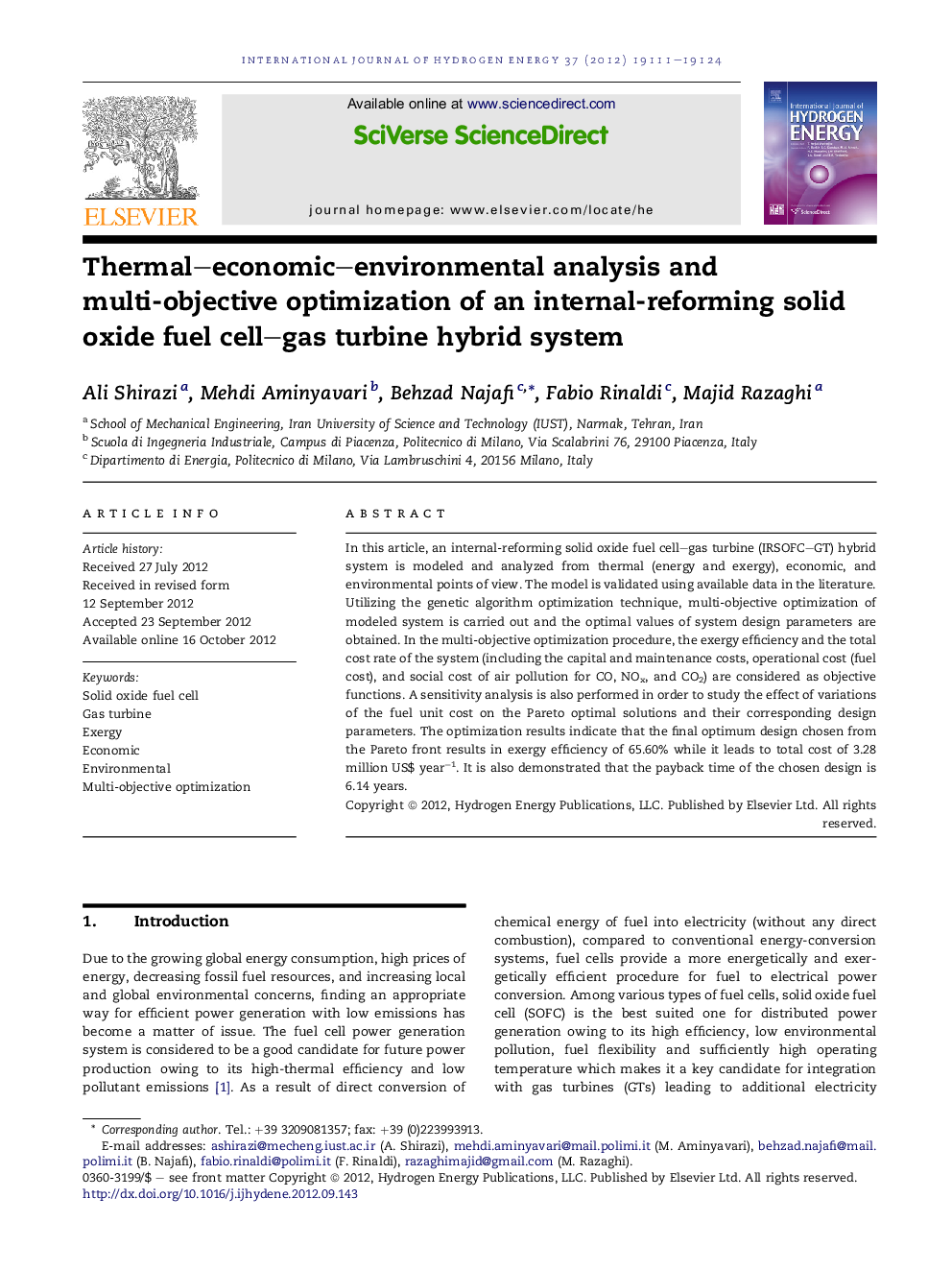| Article ID | Journal | Published Year | Pages | File Type |
|---|---|---|---|---|
| 1276119 | International Journal of Hydrogen Energy | 2012 | 14 Pages |
In this article, an internal-reforming solid oxide fuel cell–gas turbine (IRSOFC–GT) hybrid system is modeled and analyzed from thermal (energy and exergy), economic, and environmental points of view. The model is validated using available data in the literature. Utilizing the genetic algorithm optimization technique, multi-objective optimization of modeled system is carried out and the optimal values of system design parameters are obtained. In the multi-objective optimization procedure, the exergy efficiency and the total cost rate of the system (including the capital and maintenance costs, operational cost (fuel cost), and social cost of air pollution for CO, NOx, and CO2) are considered as objective functions. A sensitivity analysis is also performed in order to study the effect of variations of the fuel unit cost on the Pareto optimal solutions and their corresponding design parameters. The optimization results indicate that the final optimum design chosen from the Pareto front results in exergy efficiency of 65.60% while it leads to total cost of 3.28 million US$ year−1. It is also demonstrated that the payback time of the chosen design is 6.14 years.
► Energy, exergy, economic and environmental analysis was performed on SOFC–GT system. ► Exergy efficiency and total cost rate were considered as the conflicting objectives. ► Total cost rate includes capital, maintenance, operational and emissions costs. ► Multi-objective optimization was applied to obtain a set of optimal solutions. ► The effect of variations in fuel unit cost on Pareto optimum solutions was studied.
